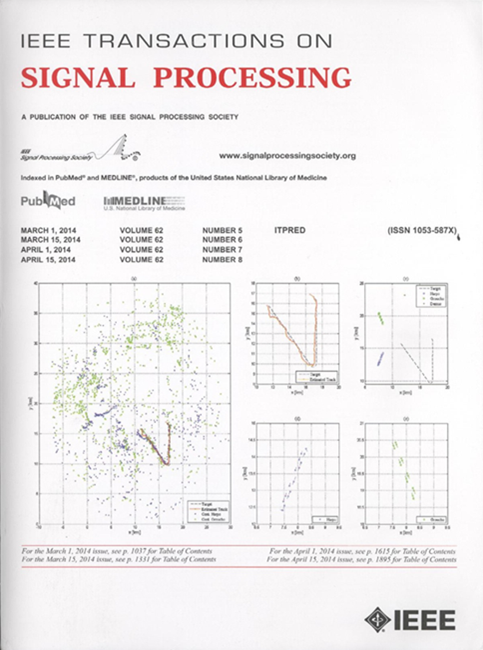Polynomial Graphical Lasso: Learning Edges From Gaussian Graph-Stationary Signals
IF 4.6
2区 工程技术
Q1 ENGINEERING, ELECTRICAL & ELECTRONIC
引用次数: 0
Abstract
This paper introduces Polynomial Graphical Lasso (PGL), a new approach to learning graph structures from nodal signals. Our key contribution lies in modeling the signals as Gaussian and stationary on the graph, enabling the development of a graph learning formulation that combines the strengths of graphical lasso with a more encompassing model. Specifically, we assume that the precision matrix can take any polynomial form of the sought graph, allowing for increased flexibility in modeling nodal relationships. Given the inherent complexity and nonconvexity of the optimization problem, we (i) propose a low-complexity algorithm that alternates between estimating the graph and precision matrices, and (ii) characterize its convergence. We evaluate the performance of PGL through comprehensive numerical simulations using both synthetic and real data, demonstrating its superiority over several alternatives. Overall, this approach presents a significant advancement in graph learning and holds promise for various applications in graph-aware signal analysis and beyond.多项式图式套索:从高斯图式静态信号中学习边缘
本文介绍了一种从节点信号中学习图结构的新方法——多项式图形Lasso (PGL)。我们的主要贡献在于将信号建模为图上的高斯和平稳信号,从而开发出一种图学习公式,该公式将图形lasso的优势与更包容的模型相结合。具体来说,我们假设精度矩阵可以采用所寻图的任何多项式形式,从而增加了建模节点关系的灵活性。考虑到优化问题固有的复杂性和非凸性,我们(i)提出了一种在估计图和精确矩阵之间交替的低复杂度算法,(ii)表征了其收敛性。我们通过综合数值模拟评估了PGL的性能,使用合成和真实数据,证明了它比几种替代方案的优越性。总的来说,这种方法在图学习方面取得了重大进展,并有望在图感知信号分析等领域的各种应用中得到应用。
本文章由计算机程序翻译,如有差异,请以英文原文为准。
求助全文
约1分钟内获得全文
求助全文
来源期刊

IEEE Transactions on Signal Processing
工程技术-工程:电子与电气
CiteScore
11.20
自引率
9.30%
发文量
310
审稿时长
3.0 months
期刊介绍:
The IEEE Transactions on Signal Processing covers novel theory, algorithms, performance analyses and applications of techniques for the processing, understanding, learning, retrieval, mining, and extraction of information from signals. The term “signal” includes, among others, audio, video, speech, image, communication, geophysical, sonar, radar, medical and musical signals. Examples of topics of interest include, but are not limited to, information processing and the theory and application of filtering, coding, transmitting, estimating, detecting, analyzing, recognizing, synthesizing, recording, and reproducing signals.
 求助内容:
求助内容: 应助结果提醒方式:
应助结果提醒方式:


